Universal Scientific CF-B-AG-02 802.11b WLAN Compact Flash Module User Manual WLAN 802 11c Cf Card Users Manual V1 0
Universal Scientific Industrial Co., Ltd. 802.11b WLAN Compact Flash Module WLAN 802 11c Cf Card Users Manual V1 0
User Manual

WLAN 802.11b Compact Flash Card
Users’ Manual v 1.2
Copyright© 2004 by separated owners. All Rights Reserved.

Contents
1. Introduction……………………………………………………...………3
1.1 Features……………………………………………….…..………………...3
2. Install and Configure a Wireless Network…………….………..……5
2.1 Preparation………………………………………………………………….5
2.2 Install Drivers and Utilities From a CD…………………………………...5
2.3 Configure the Wireless Network on Your Device……….………………7
3. Using the Client Manager Utility……………….…………….………18
3.1 Installing the Client Manager…………….……………………………....18
3.2 Taskbar Icon Status……………………………………………………….18
3.3 Using the Client Manager……………………………………………..….19
4. Specifications……………………………………………..………...…21
4.1 Physical Specifications ………………………………………………..…21
4.2 Power Characteristics………………………………………………...…..21
4.3 Networking Characteristics…………………………………………... …21
4.4 Radio Characteristics……………………………………..……………....22
5. Basic Troubleshooting………………………………………..………24
2
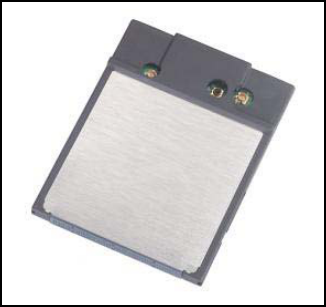
1. Introduction
A WLAN is a local area network that uses
radio frequencies to transmit and receive
data between computers or other network
devices. WLANs can be independent
networks, which use small or temporary
peer-to-peer configurations, or
infrastructure networks.
The Compact Flash card (CF card) allows
devices running the Microsoft® Pocket PC
operating system to connect to a Wi-Fi
IEEE 802.11b WLAN or communicate
directly with other devices connected to a
WLAN.
This product is a 802.11b 11 Mbps wireless network adapter that provides
CF+ host interface with Type-I mechanical design. The CF card is
designed to meet the mobility, performance, security, interoperability,
management, and reliability requirements of the IEEE 802.11b high data
rate standard. The CF card provides PDA or handheld PC users highly
mobility from cell-to-cell roaming. With a CF-to PCMCIA adapter, users
can easily implement this WLAN device under most \Windows platforms.
The product contains two ceramic antennas that provide diversity switch,
which support robust and smooth data connection under multi-path (office)
environment. New features such as WOL (Wake on LAN) and 802.11d are
supported for new applications and requirements.
In addition to WEP, WPA and TKIP are supported to provide the security
on your network.
1.1 Features
• Compact Flash form factor fits devices with Compact Flash Type I
extended card slots.
• Functions with devices that are running the Pocket PC operating
system and that are equipped with Compact Flash Type I extended
card slots.
• Compliant with 11 Mbps 802.11b high-speed specification.
• Data rate of 11/5.5/2/1 Mbps; includes automatic fallback in a noisy
environment.
3
• Power management to keep low power consumption and extend
battery life of Host system.
• Small size and premium ID design which is suitable for PDA and
handled device. Enables you to be fully mobile.
• Can be operated with IEEE 802.11b compliant equipment.
• User-friendly client manager utility.
• Supports 64- and 128-bit Wired Equivalent Privacy (WEP).
• Direct Sequence Spread Spectrum (DSSS) technology provides robust,
interference-resistant, and secure wireless connection.
• Wireless connection without the hassles and cost of cabling.
• Greater flexibility to locate or move a networked device.
• Support 802.11d for universal regulation
• The CF card has two LED indicators: Transmit/receive and power
on/off.
• Support Windows XP/ME/2000/98/CE 3.0/Pocket PC 2002,2003
4
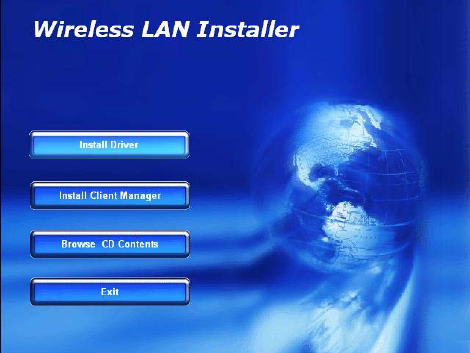
2. Install and Configure the Wireless Network
2.1 Preparation
Before the installation, please check the contents for:
• A 802.11b WLAN CF card
• A software driver CD for your CF card
• A quick install guide.
To install the CF card, you need the items:
• A device equipped with CF Type I extended card slots
• A sync cable that comes with your PDA
• A computer with a CD or DVD drive
2.2 Install Drivers and Utilities From a CD
Please follow the steps to install the drivers and utilities:
Step 1: Connect the sync cable to either a serial or a USB connector on
the computer, and connect the other end of the cable to the device.
When a connection exists between the computer and the device, you
can transfer data and synchronize the information on your computer with
the information on your device.
Step 2: Insert the software driver into the CD drive on the computer.
Step 3: The driver will auto-run. Please click Install Driver when you see
the screen.(Note: Please go to g:/WinCE/setup.exe to install the driver.
Drive g is your CD or DVD driver.)
Step 4: Follow the instructions on your computer screen to finish the
installation.
5
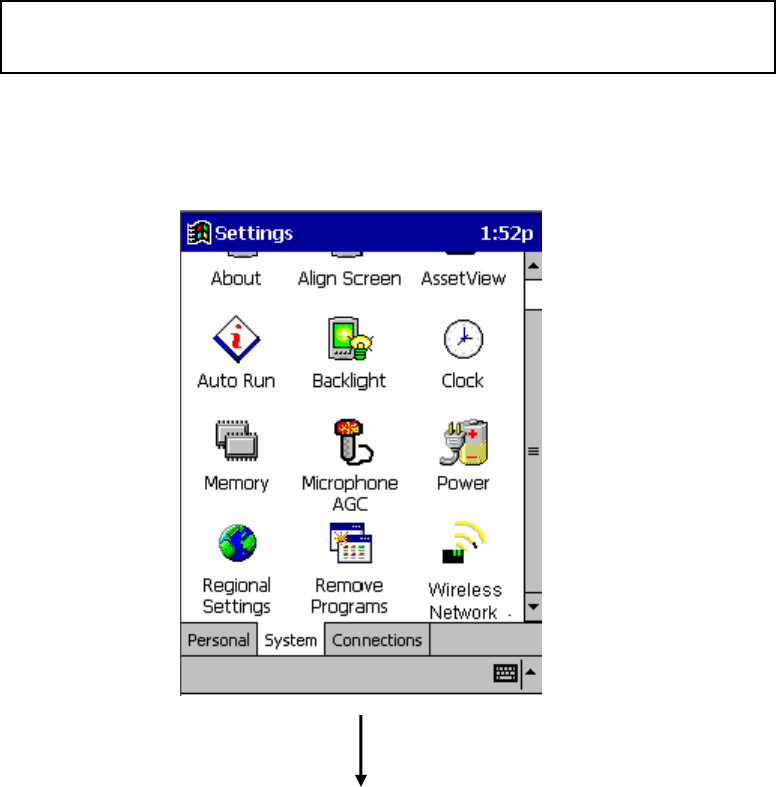
Step 5: Insert the CF card into your device.
You can access the client manager utility from the taskbar on the
Today screen.
2.3 Configure the Wireless Network on Your Device
After you insert the CF card into the host, please follow the steps to
configure the wireless network.
1. Click the Start ÆSettingsÆSystem, and then click the WLAN
Network icon to run the Wireless Networking Setting utility.
Note: For WinCE3.0, Windows CE4.0, Pocket PC 2002, and Pocket PC
2003 users, the configuration procedure is the same.
6
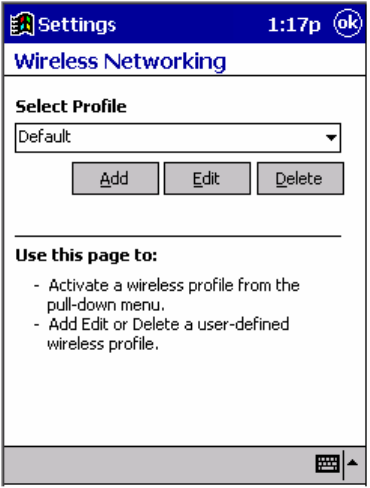
¾ (I) Select a profile and click OK to switch from one wireless network
to another.
¾ (II) Click Add or Edit to add or edit the selected profile.
¾ (III) Click Delete to delete the selected profile.
(I) Select a Profile
Select a configuration profile to switch your station from one
wireless network to another.
[NOTE]: Before you can start using configuration profiles, you need to
add a configuration profile for each wireless network environment that
you want to participate in with your (mobile) wireless client station. If you
want to use your wireless client station in multiple networking
environments that require different configuration settings, you can define
dedicated profiles for each environment. For example, you can create a
configuration profile for:
• Your school network
• A branch office
• Your home or small office/home office (SOHO) network
After you create the configuration profiles, switch your base station from
one wireless network to another by selecting one of the profiles.
(II) Add/Edit Configuration profile
¾ Assign a name to your wireless configuration profile and select
the network type to identify the type of wireless connection for
the profile:
• Access Point
7
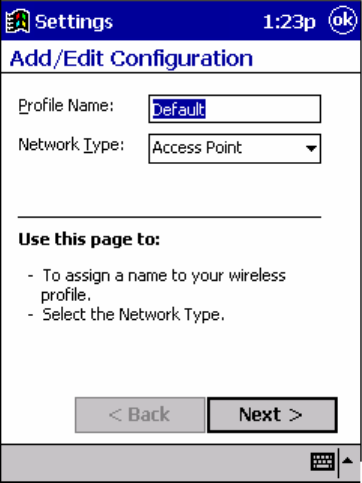
• Peer-to-Peer Group
• Act as Base Station
Click Next to set up the network name.
¾ Set up the Network Name
Use this screen to identify the name of the wireless network to
which you want to connect your computer.
• When connecting to a base station (maybe an Access
Point) ,please consult the LAN administrator to get the
correct values of the network, or click Scan to retrieve a
list of open wireless networks.
• When connecting to a peer-to-peer group, consult one of
the workgroup participants for the correct value.
Valid value is a case-sensitive string of ASCII printable
characters with a maximum of 32 characters. The value ANY
allows your computer to connect to the first open base station
network that it can find.
8
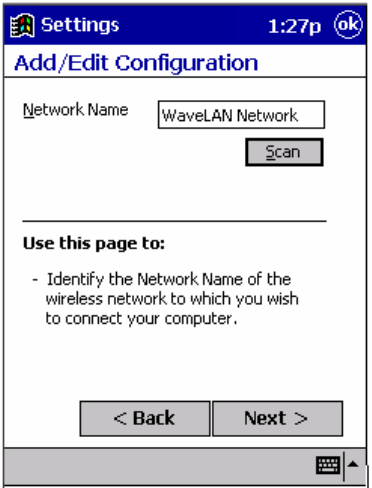
Click Back to go back to the previous screen.
Click Next to set up the encryption key.
9
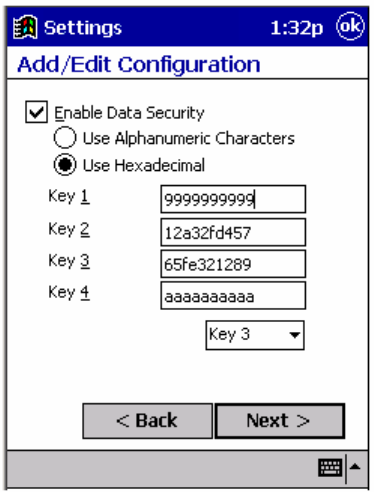
¾ Security Settings
Users can enable the wireless data encryption by ticking the
box “Enable the data security” or ignore the item. When
users choose to enable the data security, please enter the
encryption key that applies to your network.
You can enter key values using either the alphanumeric
value or the hexadecimal value. The encryption key value is
case-sensitive. Consult your LAN administrator for the
correct value.
Click Back to go back to the previous screen.
Click Next to configure the power management settings.
10
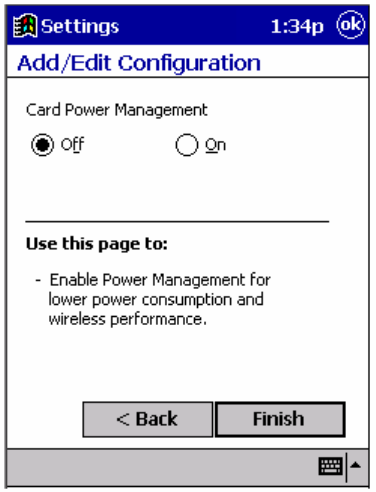
¾ Card Power Management
Users can enable power management for lower power
consumption ,or disable power management to keep the
default power consumption settings and maximize wireless
performance. Select the choice you want.
Click Back to go back to the previous screen.
Click Finish to complete setup.
11

Federal Communication Commission Interference Statement
This equipment has been tested and found to comply with the limits for
a Class B digital device, pursuant to Part 15 of the FCC Rules. These
limits are designed to provide reasonable protection against harmful
interference in a residential installation. This equipment generates,
uses and can radiate radio frequency energy and, if not installed and
used in accordance with the instructions, may cause harmful
interference to radio communications. However, there is no guarantee
that interference will not occur in a particular installation. If this
equipment does cause harmful interference to radio or television
reception, which can be determined by turning the equipment off and on,
the user is encouraged to try to correct the interference by one of the
following measures:
- Reorient or relocate the receiving antenna.
- Increase the separation between the equipment and receiver.
- Connect the equipment into an outlet on a circuit different from that
to which the receiver is connected.
- Consult the dealer or an experienced radio/TV technician for help.
This device complies with Part 15 of the FCC Rules. Operation is
subject to the following two conditions: (1) This device may not cause
harmful interference, and (2) this device must accept any interference
received, including interference that may cause undesired operation.
FCC Caution: Any changes or modifications not expressly approved by the
party responsible for compliance could void the user's authority to operate
this equipment.
The term “IC:” before the radio certification number only signifies that Industry
Canada Technical specifications were met.
Operation is subject to the following two conditions: (1) this device may not cause
interference, and (2) this device must accept any interference, including interference
that may cause undesired operation of the device.
12
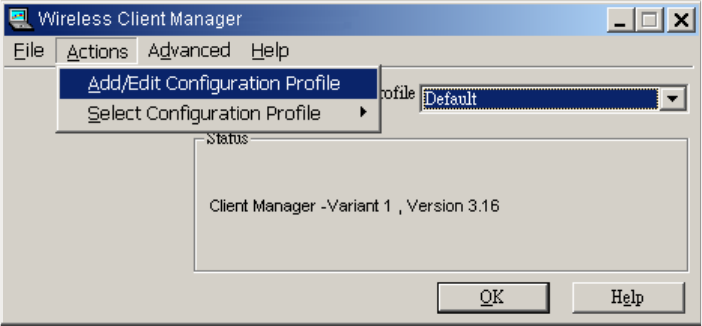
Configure the CF card under Windows Operating Systems
For Windows XP users, click the taskbar Wireless network Connection
icon to open the client manager screen and view the wireless network
status.Select the available network and click Connect. Once the
connection is established, users can see the indicator flickering to connect
with the network.
For Windows 98SE/ME/2000 users, right click the taskbar icon to launch
the client manager screen or follow the steps to click Program -> Wireless-
> Client Manager.
If the adapter can catch the current configuration file, select the network
you want and click OK. If the adapter cannot catch the correct
configuration, please do as follow:
(1)Click Actions and point the cursor to Add/Edit Configuration Profile,
and then click OK.
(2) Click Add/Edit to add or edit a profile.
13
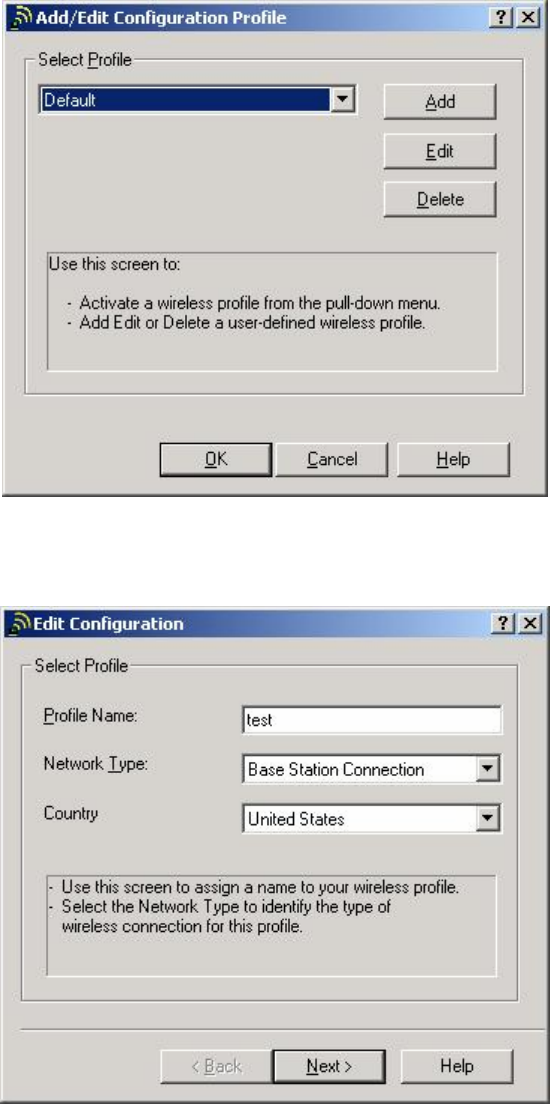
(3) Enter the Profile Name, select the Network_Type, choose the country
and then click Next. The system will identify your network.
If you do not know the network name, click Edit and then Scan and then
select the one you want.
14
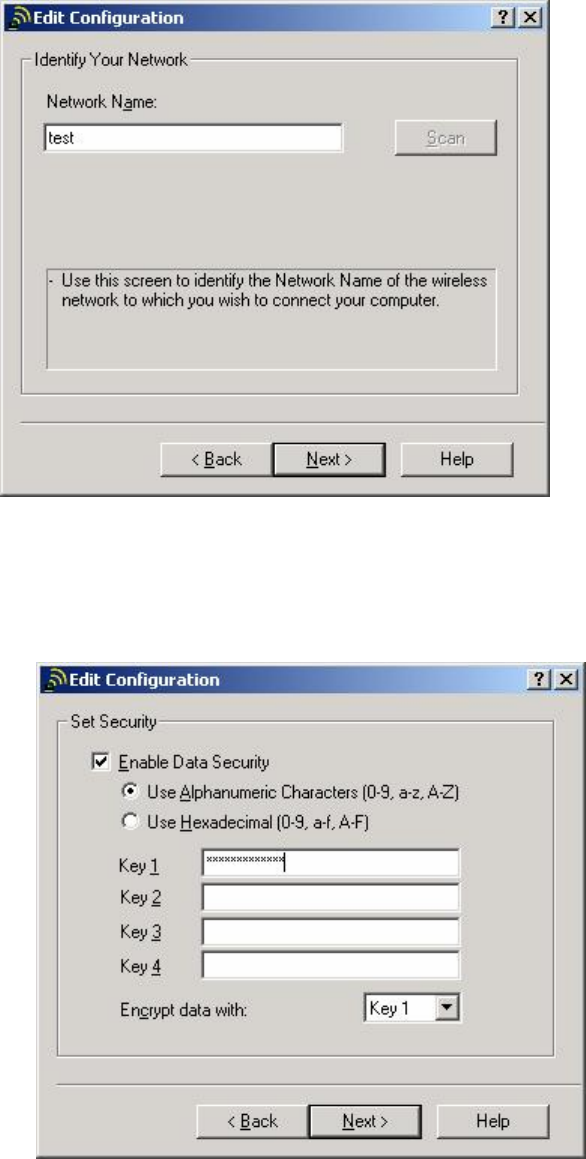
(4) If you want to set security, Tick “Enable Data Security”, select
the encryption option, enter the keys and choose the key that you
want to encrypt data with. Click Next to the next step.
(5) Choose On or Off to turn on or off power management. Click Next to
continue the configuration.
15
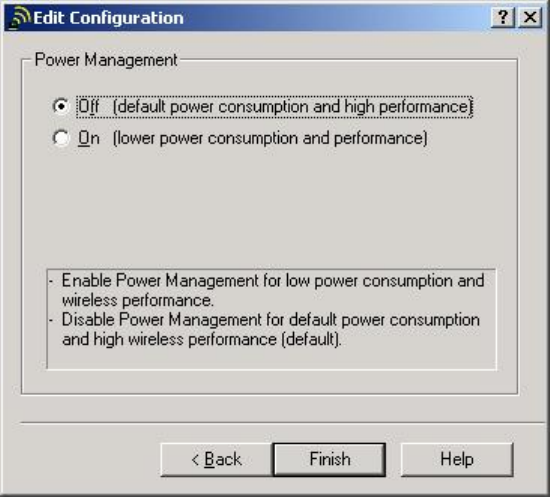
Click OK to finish the configuration. After the configuration, you can see
the indicator flickering when it connects to the network.
16
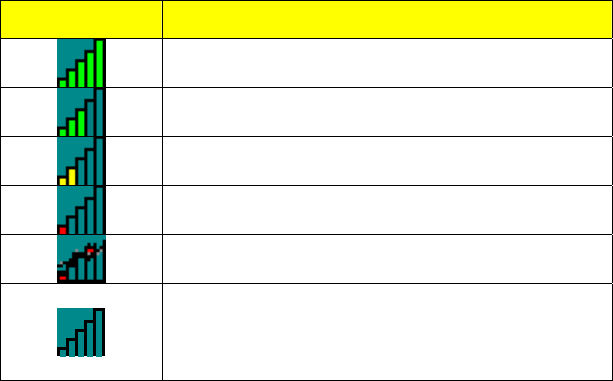
3. Using the Client Manager Utility
3.1 Installing the Client Manager
When you complete the driver installation, please insert the CF card into
the CF card slot in the device. The client manager utility can be launched
from the taskbar on the Today screen.
Users may test the network connection and a site survey by using the
client manager. The client manager taskbar icon conveys the real-time
signal strength and connection status.
3.2 Taskbar Icon Status
ICON Status
Excellent connection
Good connection
Marginal connection
Poor connection
No connection
No quality information available
(no driver, incompatible driver,
and so on)
17
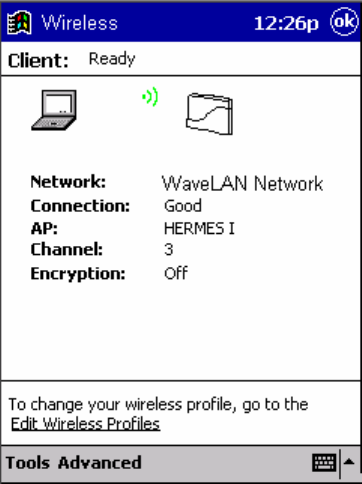
3.3 Using the Client Manager
Click the taskbar icon to open the client manager screen to check the
wireless network status.
Use the Tools pop-up menu to:
• Enter the configuration profile edit screen.
• Check the driver and firmware revision.
• Enable/disable the settings suspend while connected and
Load/Unload automatically.
• Click the Client Manager which is hidden on the taskbar.
18

You can use the Advanced pop-up menu to:
• Scan and monitor the access points in range.
• Select a partner to do a link test.
19
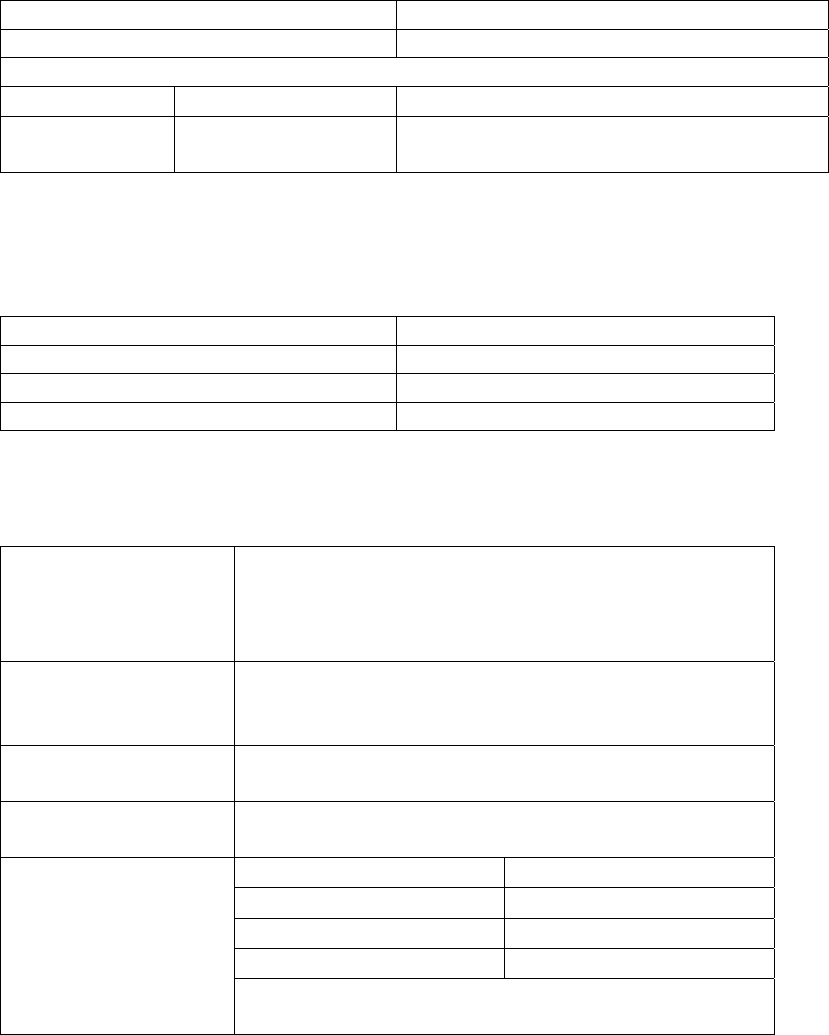
4. Specifications
4.1 Physical Specifications
Form Factor Compact Flash card Type I extended
Dimensions 52.56 x 42.80 x 5.57 mm
Temperature & Humidity
Operation 0° to 70° C Maximum humidity 95%
Storage - 15° to 85° C 5% to 95% (Non condensing, relative
humidity)
4.2 Power Characteristics
Sleep Mode 2-15 mA
Receive Mode 165 mA
Transmit Mode 265 mA
Power Supply 5/3.3 V
4.3 Networking Characteristics
Compatibility • IEEE 802.11 Standard for WLANS
(DSSS)
• Wi-Fi certified by the Wireless Ethernet
Compatibility Alliance (WECA)
Network
Operating System
Microsoft Windows 98SE/ME/2000/XP
Windows CE 3.0/ .NET
Pocket PC 2002, 2003
Host Operating
System
Pocket PC
Media Access
Protocol
CSMA/CA (Collision Avoidance) with
Acknowledgment (ACK)
• High 11 Mb/s
• Medium 5.5 Mb/s
• Standard 2 Mb/s
• Low 1 Mb/s
Data Rate
The card uses an automatic transmit-rate select
mechanism.
20

4.4 Radio Characteristics
Radio characteristics of CF cards may vary:
• According to the country where the product was purchased
• According to the type of product that was purchased
Wireless communication is often subject to local radio regulations. Although
CF card wireless networking products have been designed for operation in the
license-free 2.4 GHz band, local radio regulations may impose limitations on
using wireless communication equipment.
To comply with such regulations, CF cards are marketed with dedicated channel
sets with a number of factory-programmed channels which are identified by the
following acronyms:
• ETS for countries that adhere to the regulations as defined by the
European Telecommunications Standards Institute (ETSI)
• FCC for countries that adhere to the regulations as defined by the US
Federal Communications Commission (FCC)
• FR for France
• JP for Japan
The acronym of the channel set supported by your CF card is printed on a label
on the reverse side of your CF card.
RF Frequency Band 2.400 – 2.462 GHz (2.4 GHz ISM Band)
Number of Selectable
Subchannels 11
Modulation Technique DSSS (Direct Sequence Spread Spectrum), DBPSK,
DQPSK, CCK
Bit Error Rate (BER) Better than 10 -5
Nominal Output Power 15dBm +/- 1 dBm
Range (100 bytes User
Data) / Transmit Rate
High
Speed
11 Mb/s
Medium
Speed
5.5 Mb/s
Standard
Speed
2 Mb/s
Low
Speed
1 Mb/s
Open Office
Environment
160 m
(525 ft.)
270 m
(885 ft.)
400 m
(1300 ft.)
550 m
(1750 ft.)
Receiver Sensitivity -82dBm -87 dBm -89 dBm -93 dBm
Delay Spread
(at FER of <1%) 65 ns 300 ns 400 ns 500 ns
21

CAUTION: To maintain compliance with FCC’s RF exposure guidelines, this
equipment should be installed and operated with minimum distance 20cm between the
radiator and your body. Use on the supplied antenna. Unauthorized antenna,
modification, or attachments could damage the transmitter and may violate FCC
regulations.
This device complies with Part 15 of the FCC Rules. Operation is subject to the following
two conditions:
(1) This device may not cause harmful interference.
(2) This device must accept any interference received, including interference that
may cause undesired operation.
This device is intended only for OEM integrators under the following conditions:
(1) The transmitter module may not be co-located with any other transmitter or antenna.
As long as conduction above is met, further transmitter test will not be required.
However, the OEM integrator is still responsible for testing their end-product
for any additional compliance requirements required with this module installed
(for example, digital device emissions, PC peripheral requirements, etc.).
IMPORTANT NOTE: In the event that these conditions can not be met (for
example certain laptop configurations or co-location with another transmitter),
then the FCC authorization is no longer considered valid and the FCC ID can
not be used on the final product. In these circumstances, the OEM integrator
will be responsible for re-evaluating the end product (including the transmitter)
and obtaining a separate FCC authorization.
End Product Labeling
The final end product must be labeled in a visible area with the following:
“Contains TX FCC ID: IXMCF-B-AG-02 ”.
Manual Information That Must be Included
The OEM integrator has to be aware not to provide information to the end user
regarding how to install or remove this RF module in the users manual of the
end product which integrate this module.
The users manual for OEM integrators must include the following information
in a prominent location “
IMPORTANT NOTE: To comply with FCC RF exposure compliance requirements. The
antenna must not be co-located or operating in conjunction with any other antenna or
transmitter.
USI declared that CF-B-AG-02 is limited in CH1~11 by specified firmware
controlled in USA.
22
5.Basic Troubleshooting
If you cannot connect your CF card to the network, check the light on your CF
card:
[Note]: The 802.11b WLAN CF card has two LED indicators Transmit/Receive and Power
ON/OFF LED Indicators.
• Power light on, transmit/receive light off
• Power light on, transmit/receive light flickering
• Both power light and transmit/receive light blink once every 10 seconds
• Power light is flickering
• No light activity
If there is light activity, use the Client Manager diagnostic tool on your station
to run the link test to verify the quality of wireless network-interface radio
communications with the network.
Power Light on, Transmit/Receive Light off
Indicates normal operation:
• The CF card is in operation.
• The transmit/receive light indicates that there is no activity on the
wireless network.
The absence of activity on the wireless network interface could be related to
the fact that:
• You moved out of wireless range of the base stations that could
provide access to the selected network.
• There are no wireless client stations in the wireless range of your
computer to participate in the selected peer-to-peer group.
• The base stations that could provide access to the selected network
are not functioning properly or are turned off.
•
Power Light on, Transmit/Receive Light Flickering
Indicates normal operation:
• The CF card is in operation.
23
24
• The transmit/receive light indicates that there are activities on the wireless
network.
If the radio of your CF card seems to communicate with other radio devices
but does not succeed in actually connecting to the network (in other words,
the power and radio light shows normal activity), you may need to verify
whether your operating system installed the correct network protocol settings.
Power Lights Blink Once Every 10 Seconds
Indicates that the CF card is in operation and working properly, but that
the card is unable to establish a wireless connection to the wireless
network.
Possible causes might be:
• Your wireless station is outside the wireless range of the base
stations that could provide access to the selected network.
• The wireless network interface of your station has been configured
with an incorrect network name or encryption key settings.
• You selected an incorrect configuration profile on your wireless
station.
• The base stations that could provide access to the selected
network have been configured to deny access to stations that use
the value ANY as their network name.
Contact your LAN administrator for information about the correct values of
the parameter settings that apply to your network.
No Light Activity
If there is absolutely no light activity on the power light and
receive/transmit light of the CF card:
• The CF card device is not properly connected to your computer.
• No driver was installed to allow communication between your
computer and the wireless network interface.
Power Light Is Flickering
Indicates that you enabled the card power management option for the CF
card of a wireless client station (advanced settings).